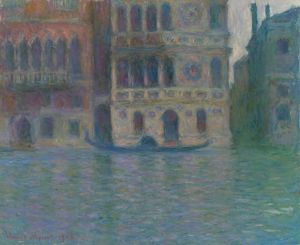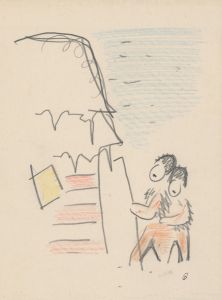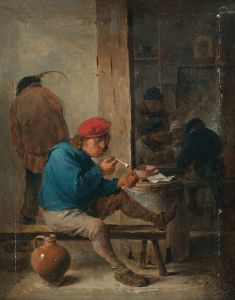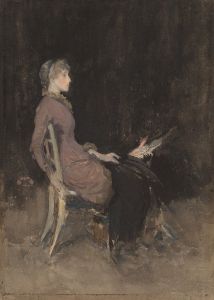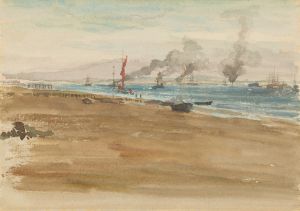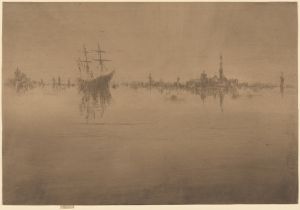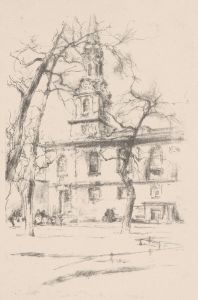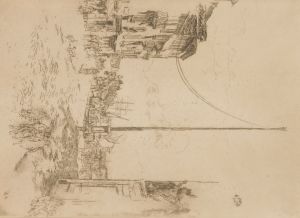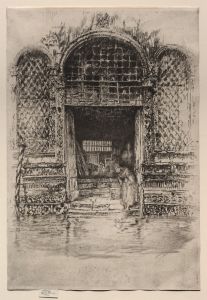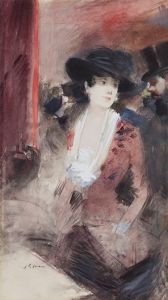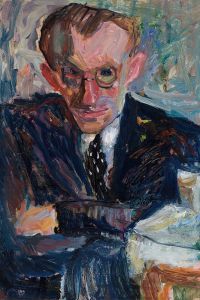
Traghetto, No. 2
A hand-painted replica of James Abbott McNeill Whistler’s masterpiece Traghetto, No. 2, meticulously crafted by professional artists to capture the true essence of the original. Each piece is created with museum-quality canvas and rare mineral pigments, carefully painted by experienced artists with delicate brushstrokes and rich, layered colors to perfectly recreate the texture of the original artwork. Unlike machine-printed reproductions, this hand-painted version brings the painting to life, infused with the artist’s emotions and skill in every stroke. Whether for personal collection or home decoration, it instantly elevates the artistic atmosphere of any space.
James Abbott McNeill Whistler was an American artist active during the late 19th century, known for his contributions to the Aesthetic Movement and his innovative approach to painting. One of his works, "Traghetto, No. 2," is part of his series of Venetian etchings, which he created during his time in Venice from 1879 to 1880. This period was particularly significant for Whistler, as it marked a time of both personal and professional transformation.
Whistler arrived in Venice in September 1879, following a financially and emotionally challenging period in London, which included a high-profile libel case against art critic John Ruskin. The case, although won by Whistler, left him in financial ruin. Venice offered Whistler a fresh start and an opportunity to immerse himself in a new environment rich with artistic inspiration.
"Traghetto, No. 2" is an etching, a medium Whistler mastered and used extensively during his Venetian sojourn. The term "traghetto" refers to the gondola ferries that cross the canals of Venice, a common sight in the city and a subject that Whistler found intriguing. His Venetian etchings are celebrated for their atmospheric quality and the way they capture the unique interplay of light and shadow in the city.
In "Traghetto, No. 2," Whistler employs his characteristic style, focusing on the subtle nuances of the scene rather than detailed representation. The etching depicts a gondola ferrying passengers across a canal, with the architecture of Venice providing a backdrop. Whistler's use of line is both delicate and expressive, conveying the movement of the water and the serene yet bustling life of the city. His ability to suggest detail through minimal means is a hallmark of his work, and this etching exemplifies his skill in capturing the essence of a scene with economy and grace.
Whistler's time in Venice was prolific; he produced over fifty etchings and numerous pastels, which were later exhibited to critical acclaim. These works played a crucial role in reviving his career and establishing his reputation as a leading artist of his time. The Venetian etchings, including "Traghetto, No. 2," are considered some of his finest works, showcasing his ability to blend realism with a poetic sensibility.
The etchings from this period reflect Whistler's interest in the effects of light and atmosphere, themes that were central to his artistic philosophy. He was influenced by the works of earlier masters such as Rembrandt and the Japanese prints that were popular in Europe at the time. Whistler's approach to composition and his emphasis on tonal harmony were innovative, contributing to the development of modern art.
"Traghetto, No. 2" and Whistler's other Venetian etchings continue to be studied and admired for their technical mastery and artistic vision. They offer a glimpse into the daily life of Venice in the late 19th century and reflect Whistler's unique perspective as an outsider captivated by the city's charm. These works remain an important part of Whistler's legacy, illustrating his ability to transform everyday scenes into works of art that resonate with beauty and emotion.





